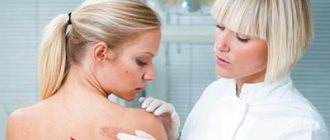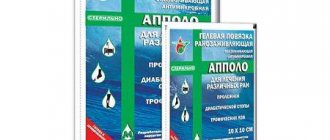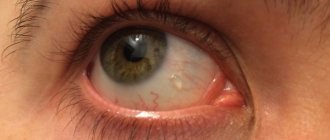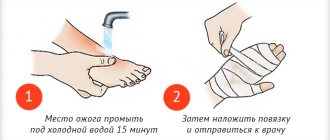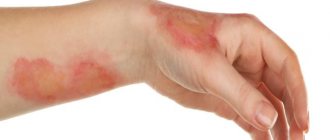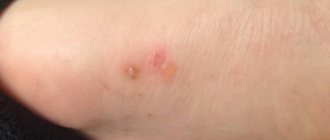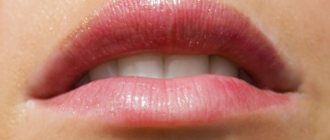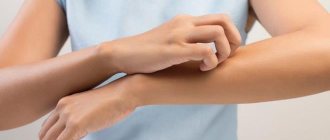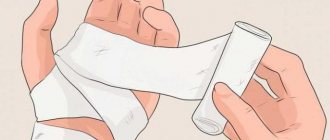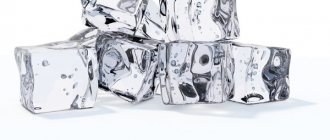A blister is a localized formation on the skin that occurs as a result of inflammatory swelling of the upper layer of the dermis. As a rule, blisters on the body have rounded outlines of various sizes and are raised, exfoliated areas of the epidermis filled with ichor. Such skin rashes may be an indicator of the body's reaction to some unacceptable influence, which goes away after the unwanted agent is eliminated. In another case, blisters may be a symptom of a serious illness.
Blisters on the skin
A blister is a fluid-filled formation that is often painful. They come in a variety of sizes: from very small to quite large - the size of a palm. Filling the blister can be:
- clear liquid
- pus,
- blood.
Such formations tend to appear quickly as a result of a certain exposure, and the blisters also quickly disappear on their own when the exposure stops. Characteristic bulges appear on the skin surface as a result of swelling, inflammatory nature, of the papillae of the upper layer of the dermis. Blisters cause an itchy feeling on the skin.
Causes of blisters
Blisters themselves are not a disease, but only act as a reaction of the body to various irritants, both internal and external. The mechanism for the formation of a blister is the separation of the papillary layer of the skin and the further penetration of blood elements into the formed cavity, which leads to swelling. Blisters can appear on any part of the skin and mucous membranes, either singly or in groups. A characteristic feature of such edema is its rapid occurrence, as well as its fragility.
Blisters on the body, as well as on the mucous membranes, can be divided into four categories based on the reasons that led to their occurrence.
Classification of blisters
Blisters appear as a result of various influences on the body by external and internal factors. The reasons that caused the formation of blisters on the skin or mucous membranes determine the classification of this phenomenon.
Blisters are:
- symptomatic
– this is when their appearance is one of the symptoms of a certain disease:
- faces,
follicular tonsillitis,
- autoimmune diseases,
- herpes,
- streptoderma,
- fungal diseases,
- herpes zoster,
- chicken pox;
- allergic
– this phenomenon, in turn, is initiated by:
- medications, if any component in their composition causes side effects;
food products that contain a substance perceived by the body as an allergen;
- costume jewelry and low-quality or expired cosmetics;
- household chemicals or substances with which people come into contact at work;
- the body's reaction to insect bites;
- contact with certain plants;
- burns
– caused in different ways:
- in contact with fire;
from contact with liquids or objects heated to high temperatures;
- from direct exposure to sunlight;
- as a result mechanical
or
physical
when rubbing the skin:- from the tools on the palms of the hands,
on the body from rough clothes,
- on the feet from uncomfortable shoes.
Blisters appeared
In the summer, blisters often appear on the body.
They protect the body from synthetic or natural irritants. If a mosquito or midge bites, itching occurs, due to which the blister does not go away for a long time, because the person scratches it.
If you touch stinging nettle or any other stinging plant, blisters may appear. Nettle is not unsafe and allergies to it go away quickly.
If blisters appear for unknown reasons, then you need to go to the doctor. Perhaps this is an allergy to household chemicals, medications or food, as well as a manifestation of an infectious disease.
If blisters occur, you need to clean the skin and apply a lotion with a hypertonic substance. You should not pierce blisters or tear off the skin, because infection can enter the body.
Primary diagnosis and symptoms
Blisters are easily identified when they appear, because their presence is usually accompanied by the following sensations:
- itching,
- burning,
- discomfort,
- there may be a painful feeling.
Visually, the presence of blisters can be detected on the skin if the formations that appear correspond to the description given above:
- by configuration - irregular or round outlines;
- density – are dense formations;
- color – pale color, maybe red;
- shape – convexity above the surface;
- size - they come in different sizes; it happens that small blisters merge into one.
Read below about the reasons for the appearance of large and small watery blisters on the skin.
Possible pathologies
Blisters are a signal that a person may have one of the following problems:
- Mycosis
is a disease associated with a fungal infection; pink blisters are accompanied by itching and begin to peel off over time. - Insect bites
– substances that get under the skin during a bite very quickly provoke swelling in the form of a blister and redness. A bite may carry the potential for side problems from insects:
- hornets,
- ticks,
- flies,
- bumblebees,
- gadflies,
- ticks,
- bedbugs,
- bees,
- midges
mosquitoes,
– blisters that appear on the skin are very similar to the reaction of the skin after contact with nettles. Hives or rashes similar to hives indicate that one of the following problems is present:
- allergic reaction,
- diseases associated with endocrine system disorders:
hypothyroidism,
thyroiditis,
- three types of herpes infection: chickenpox, herpes simplex, shingles;
rubella;
- pathology of the rectum,
liver tumor,
The integrity of the blisters must not be damaged. It is necessary to ensure that their surface is not subject to injury. This is so that the blister does not accidentally become infected if its surface loses its integrity. Avoid scratching the rash.
In what cases should you consult a doctor?
If the appearance and location of the blisters indicate that they are infectious in nature, you should consult a doctor. You should contact a dermatologist or therapist. If the cause of blisters is a burn, then the threat to health depends on its area. A single blister with an area of 1-2 square centimeters does not pose a threat, but if, for example, an entire hand is burned, you need to contact a burn center or the office of a combustiologist (burn specialist). If there is no such specialist in your local clinic, you can contact a surgeon. If the blisters do not disappear on their own during the day, then you need to contact your local physician to find out the reason that initiated them. For this, the doctor will prescribe an examination.
After determining the cause of the blisters, the doctor prescribes treatment measures, this may be:
- for allergies - eliminating the allergic agent from your environment, taking antihistamines, sorbents, carrying out specific immunotherapy;
- if affected by herpes - care for the rashes, lubricating them with brilliant green;
- when diagnosing diseases, treatment of the main cause that caused the rash.
Burn blister or burn blister - what do you have?
Dermatologists classify the types of skin rashes caused by irritation and injury. Bubbles are even distinguished by size - small elements similar to a small rash are called bubbles; larger sacs of liquid formed when several small bubbles merge are called blisters.
If we turn to the definition of a blister, this is the name for a subcutaneous bubble that occurs due to allergies or mechanical friction (for example, if your shoes rubbed). Therefore, it is correct to call the elements that appear after a burn bubbles.
However, when describing your symptoms to your doctor, you can use any term - most likely, he will understand you.
Treatment of blisters
Before taking any measures to treat blisters, it is important to determine what causes the blisters in a particular case. So, blisters caused by mechanical damage and not life-threatening can be treated independently, or you can contact a therapist for a procedure for opening the cavity and further disinfecting the damaged epidermis. Subsequently, the opened blister is bandaged to prevent infection from entering unprotected areas of the skin and, if possible, reduce the load on this area of the body, eliminating friction. To allow the blister to dry, it is recommended to remove the bandage at night.
For allergic blisters, antihistamines and ointments are used, and possible allergens are eliminated from the diet or environment. Allergic blisters caused by an insect bite cause severe itching, and in order to reduce it, corticosteroid ointments and analgesics are used. To treat allergic reactions to bites, Psilobalm should be used.
However, you should not self-medicate with multiple rashes on the body in the form of blisters. First you need to find out the reason for their appearance. To do this, they take a blood test to determine the presence of allergens in it and, at the same time, take a sample of liquid from one blister to identify infectious bacteria.
To get rid of symptomatic blisters, it is necessary first of all to begin treatment of the disease that provoked their appearance, and at the same time reduce itching and pain by using an ointment based on analgesics, as well as wipe the inflamed areas of the skin with Furacilin solution.
Blisters caused by the herpes virus are lubricated with antiviral ointments, such as Acyclovir, Zovirax, Oxolinic ointment. To be fair, it should be noted that at the moment no medicine can completely defeat the herpes virus, but the use of ointments prevents its further spread on the skin.
For a more fruitful fight, it is recommended to take immunomodulators, such as Echinacea Extract, Groprinosin. Any delay in treatment risks more serious manifestations, such as shingles and inflammation of the genital organs.
For blisters on the tongue, rinse the mouth with antiseptics and infusions of calendula and chamomile to relieve inflammation.
Treatment of blisters, despite their fragility, involves a very responsible process, which includes diagnosis, pain relief, disinfection and treatment of the disease that caused the blisters.
What to do with a blister after a burn: treat it or get rid of it?
The burn bubble needs to burst, BUT a doctor must do this.
Before starting the procedure, the burn site and bladder are treated with an antiseptic solution.
The bladder is punctured with a sterile needle. The puncture should be shallow - you just need to burst the bubble itself from above; The procedure is practically painless and may sting slightly.
Using a sterile napkin, remove the liquid that has leaked from the bladder. The film is carefully removed from the surface of the skin, and the wound is treated with an antiseptic. A sterile bandage with an antimicrobial agent is applied to the burn site.
A healing ointment is also used to accelerate skin regeneration. The La-Cri restorative cream, which contains only natural ingredients, is perfect for these purposes. Its natural non-hormonal composition is designed specifically to eliminate all kinds of skin problems and cope with the consequences of burns:
- Panthenol and avocado oil accelerate the healing and regeneration process and soften the skin.
- Licorice has anti-inflammatory properties.
- Walnut extract protects against germs.
After applying the cream, the burn site should be covered with a sterile bandage to prevent dirt from getting into the wound.
If the procedure is carried out under sterile conditions, then you are not at risk of infection. And with regular use of the La-Cri healing ointment, the burn will go away very quickly and will not leave any traces.
Preventing blisters
It is almost impossible to prevent the occurrence of blisters, which are symptoms of various diseases, but you can prevent the exacerbation of autoimmune diseases by taking B vitamins, as well as strengthening the immune system. A good way to prevent the appearance of blisters in areas of rubbing is to frequently change underwear, wear cotton fabrics rather than synthetics, and use talcum powder in areas where the skin touches in case of excessive sweating.
Good comfortable shoes with the right last will protect the skin of your feet even during long daily wear. The sole of the shoe should not be too soft, as long-term walking causes the sole to rub, which leads to inflammation of the tissue. When choosing shoes, you should take into account that your feet become fuller in the afternoon and a pair purchased in the morning will be unbearably tight by the evening, causing friction on the skin.
When working with tools, simple cotton gloves will prevent chafing and keep your hands safe. Rubber gloves are simply necessary for prolonged contact with any household chemicals, contact with the skin can cause allergies or chemical burns.
In order to avoid becoming a victim of unscrupulous manufacturers, it is recommended that all cosmetic products, including hair dye, be tested on the inside of the elbow before the main use. At the first signs of an allergy, you should wash off the substance and lubricate the reddened area with Psilobalm.
Since most blisters occur due to the presence of external manifestations of bacteria, microorganisms and lack of personal hygiene, in order to prevent them and prevent their possible occurrence, it is necessary to devote more time to your health, as well as comply with occupational hygiene and safety standards.
Prevention and further care
Prevention measures depend on the specific cause of the fluid blisters. Prevention of infectious diseases comes down to preventing infection and maintaining immunity. In the case of chickenpox, the main preventative measure is isolation from patients.
Most people are already infected with herpes, so to avoid unpleasant lesions on the skin, you should support your immune system by taking echinacea tincture , avoiding hypothermia, lack of sleep, stress and malnutrition.
Fungal infections are most often transmitted in public baths or when using the same shoes/clothes/towels. It is enough to follow the rules of personal hygiene and use your own shoes, clothes and towels to avoid infection.
In case of thermal burns, you should immediately place the burned area under a stream of cold water and hold it for 8-10 minutes, no less. pumpkin or aloe will also help . Pieces of beet root, pumpkin fruit or aloe leaf should be applied to the burned area and held.
After treatment, it is important to prevent infection from entering. To do this, the wound must be kept clean, treated with disinfectants, bandaged or sealed with an adhesive plaster until the wound heals. If an infection has entered the wound, and this can be seen by swelling and discoloration, you should consult a doctor.
